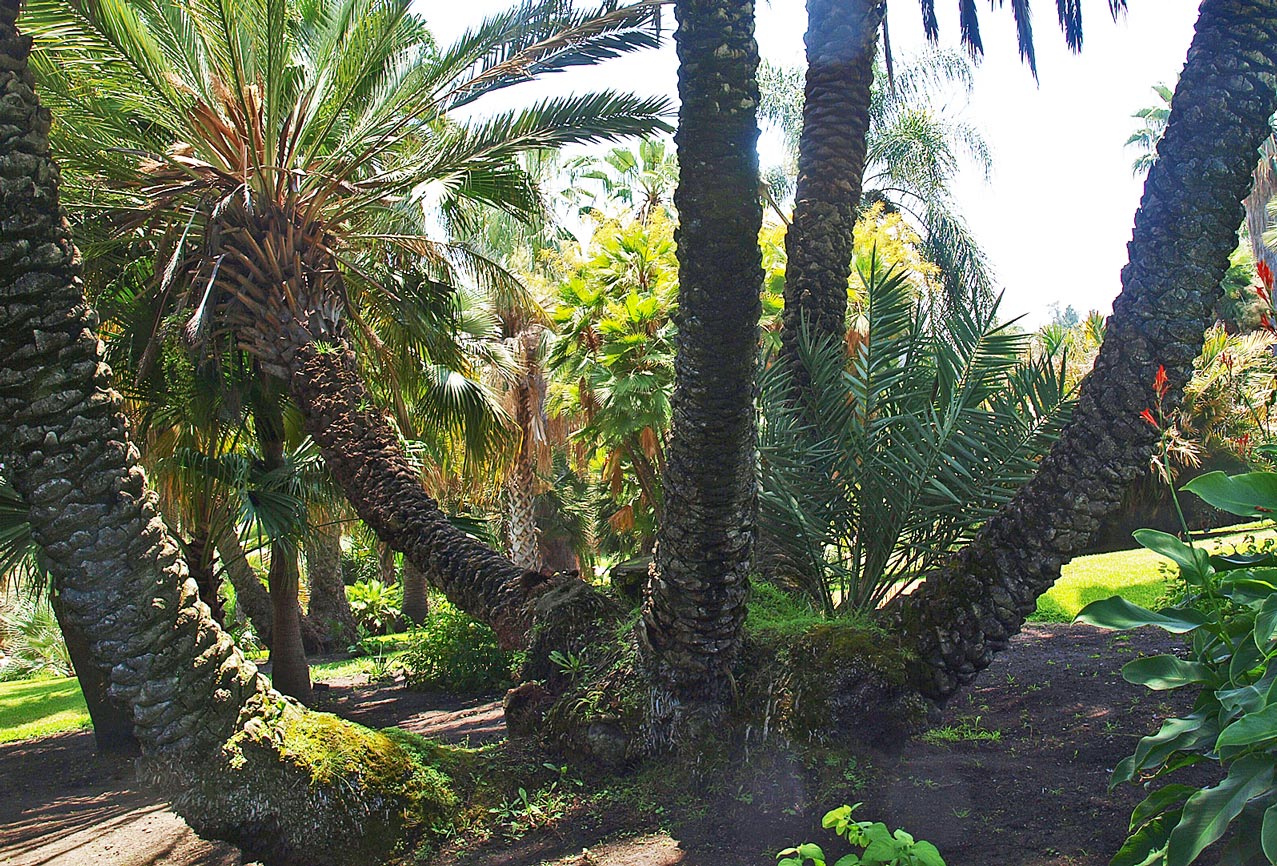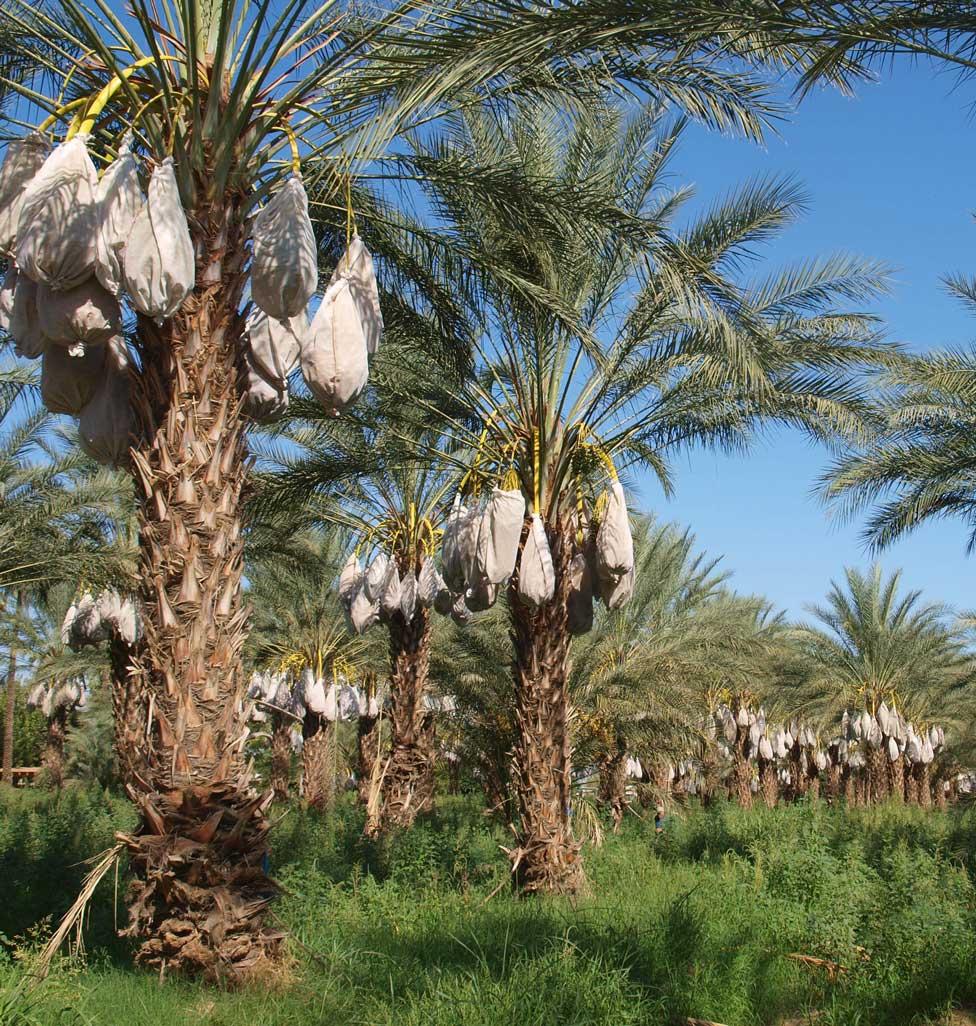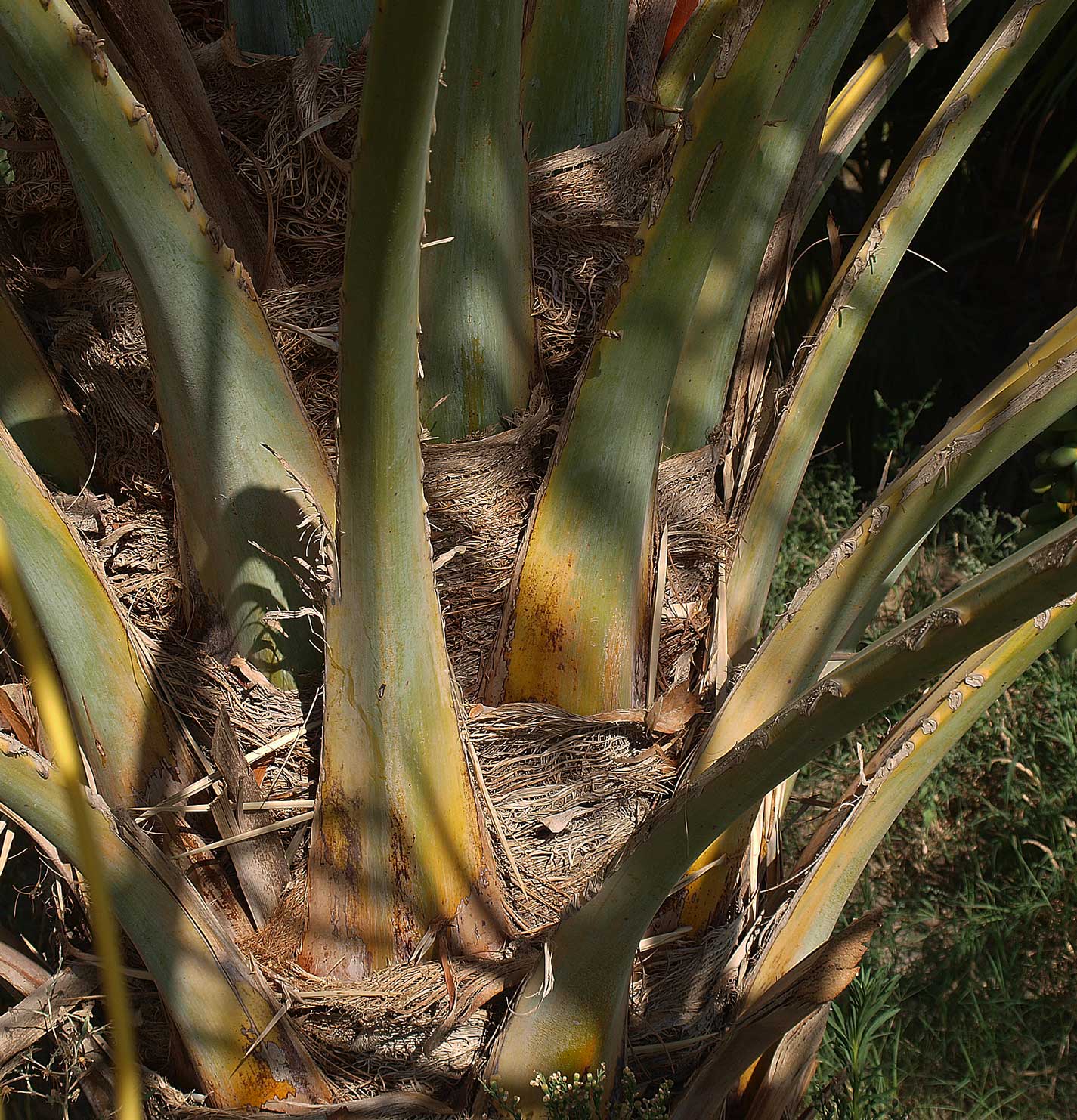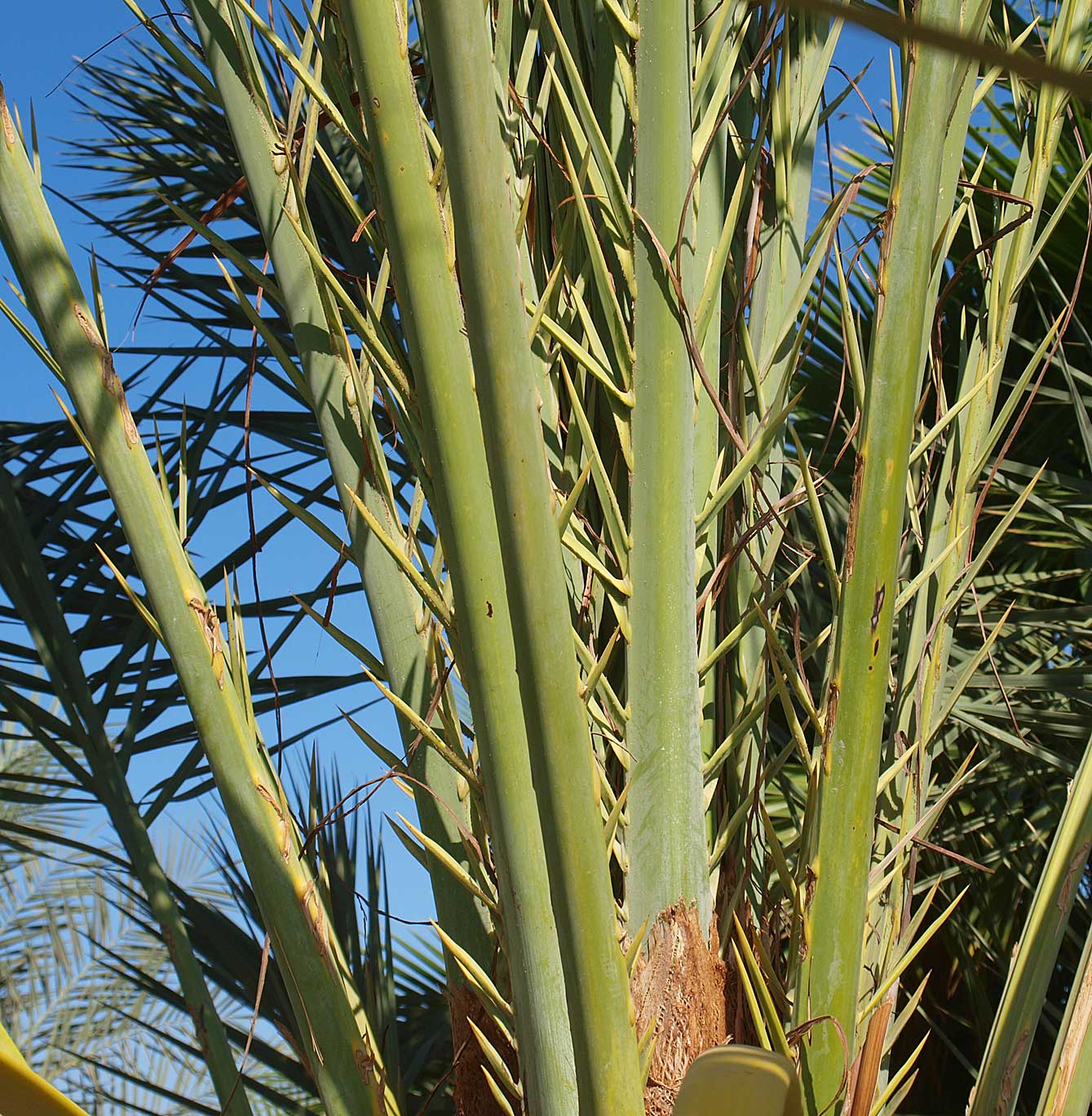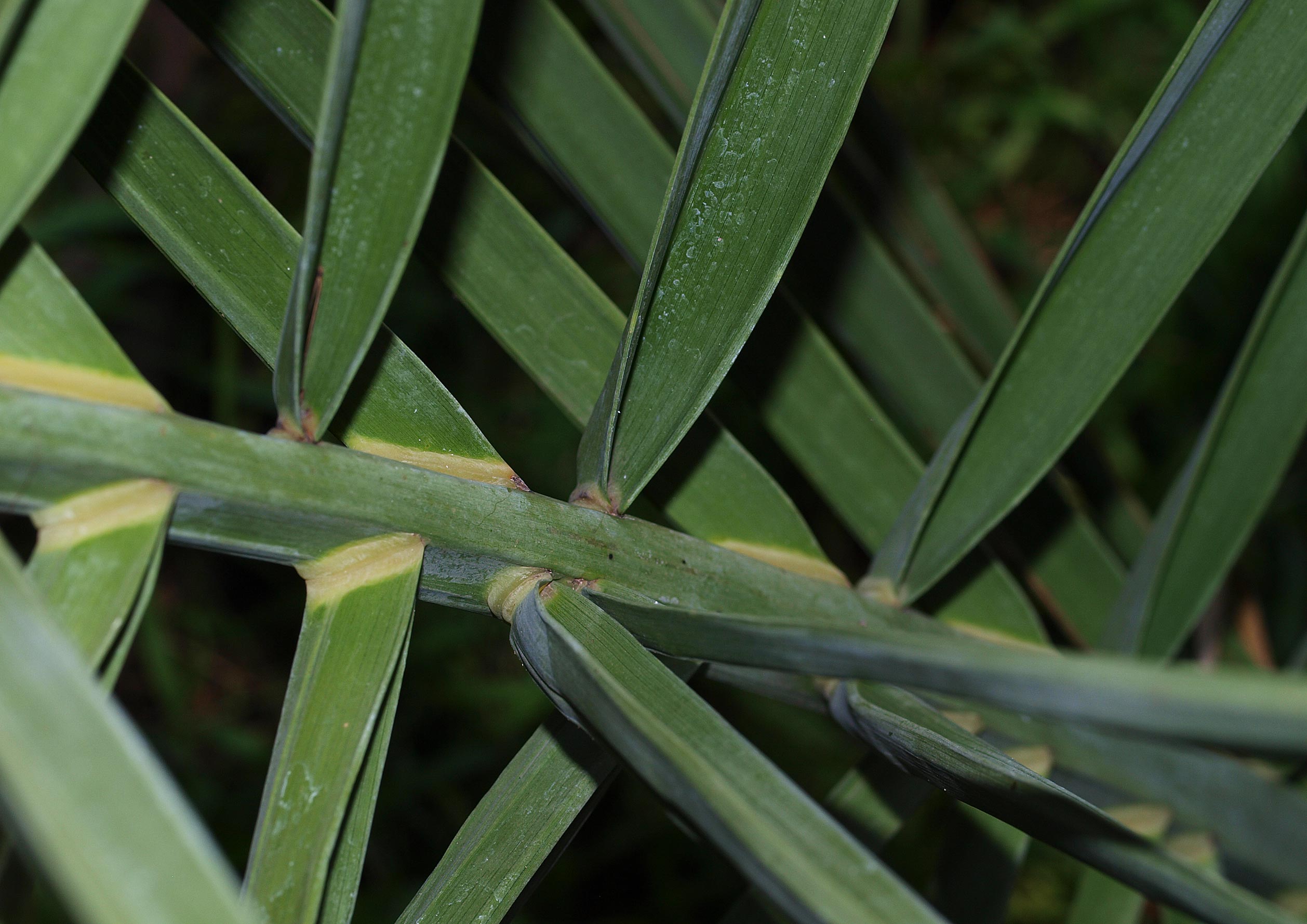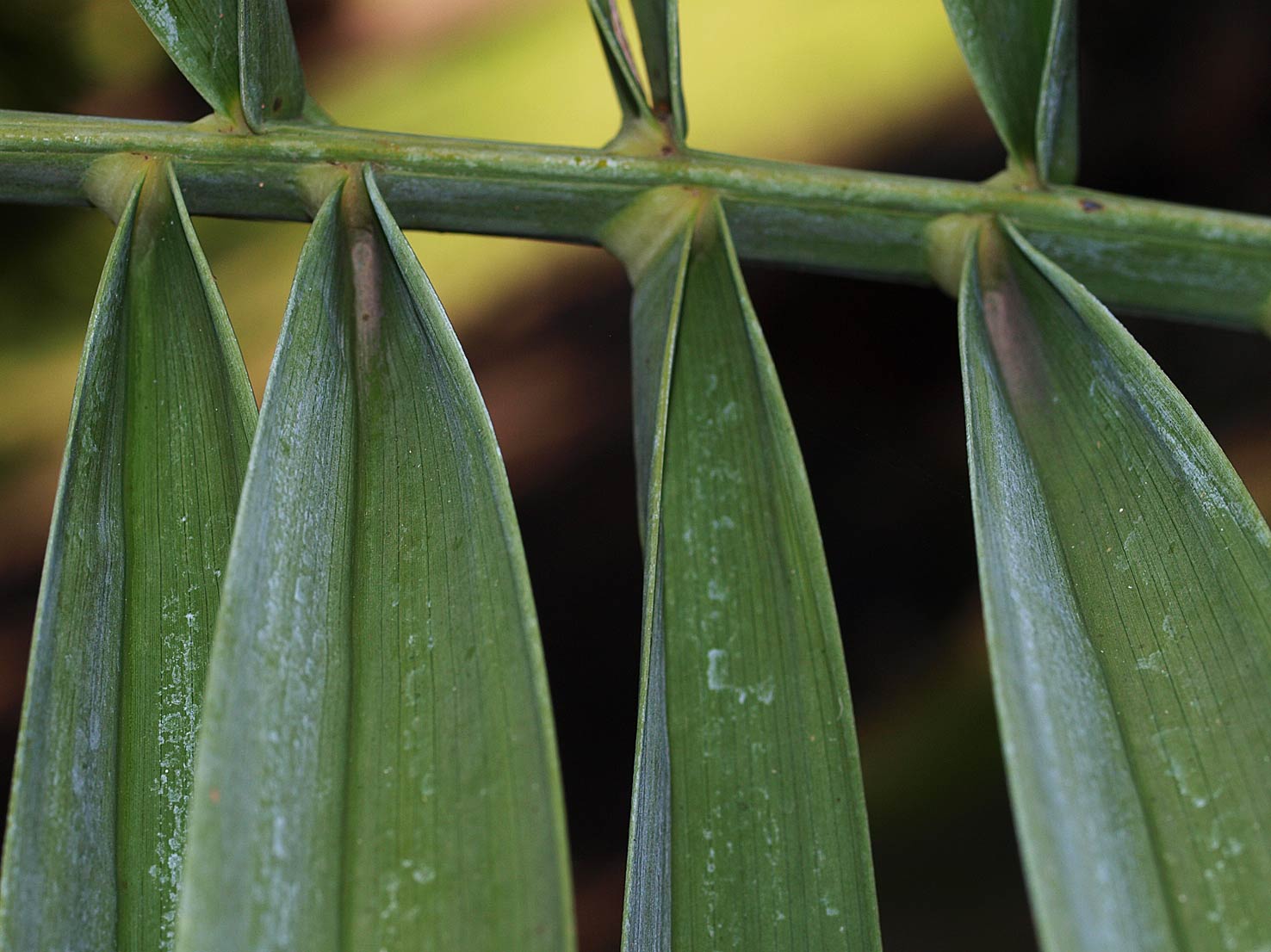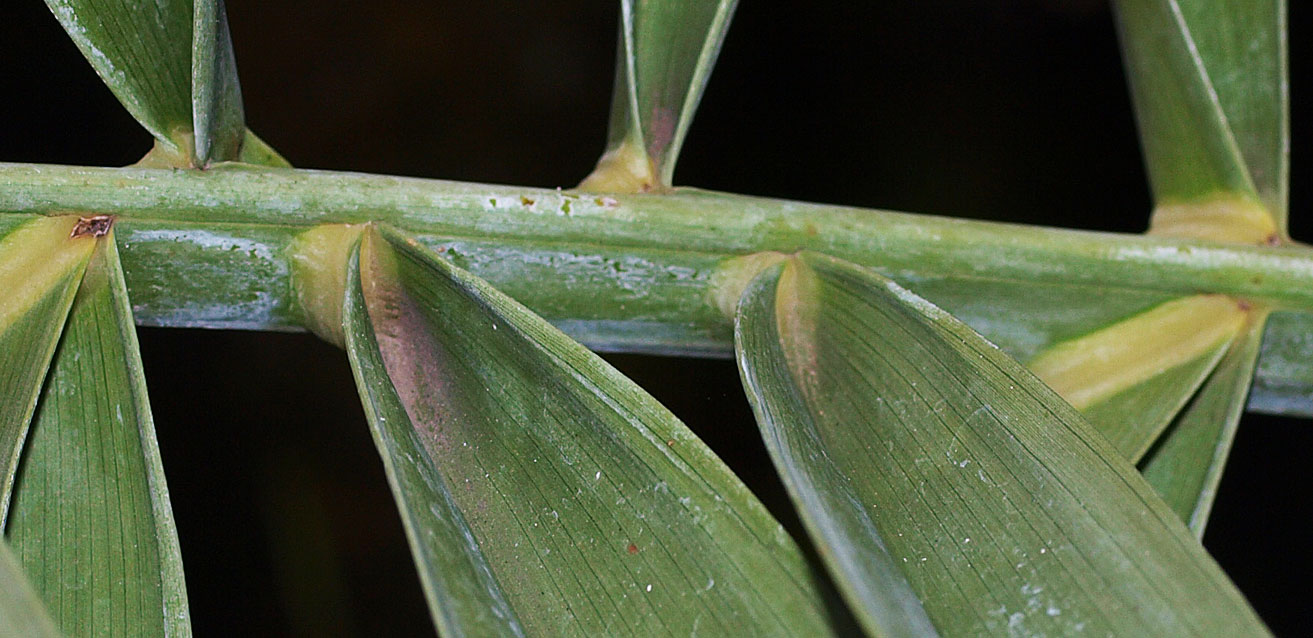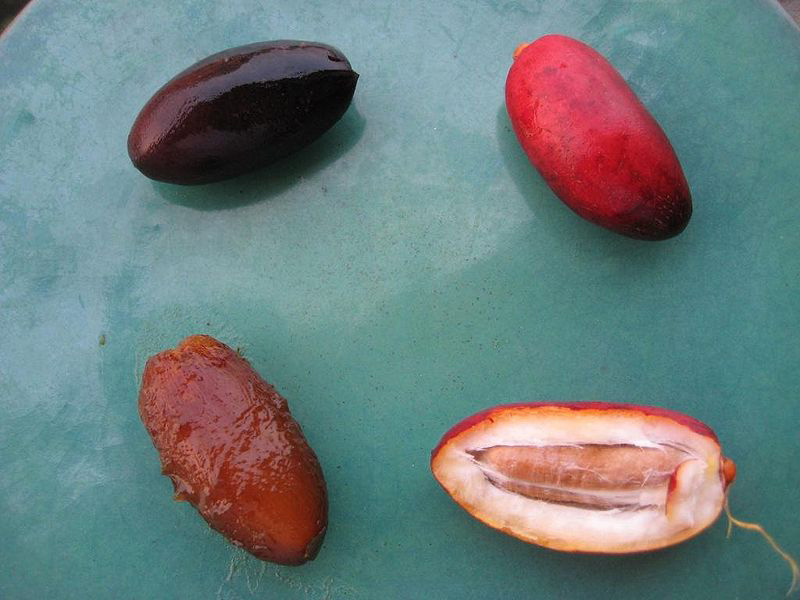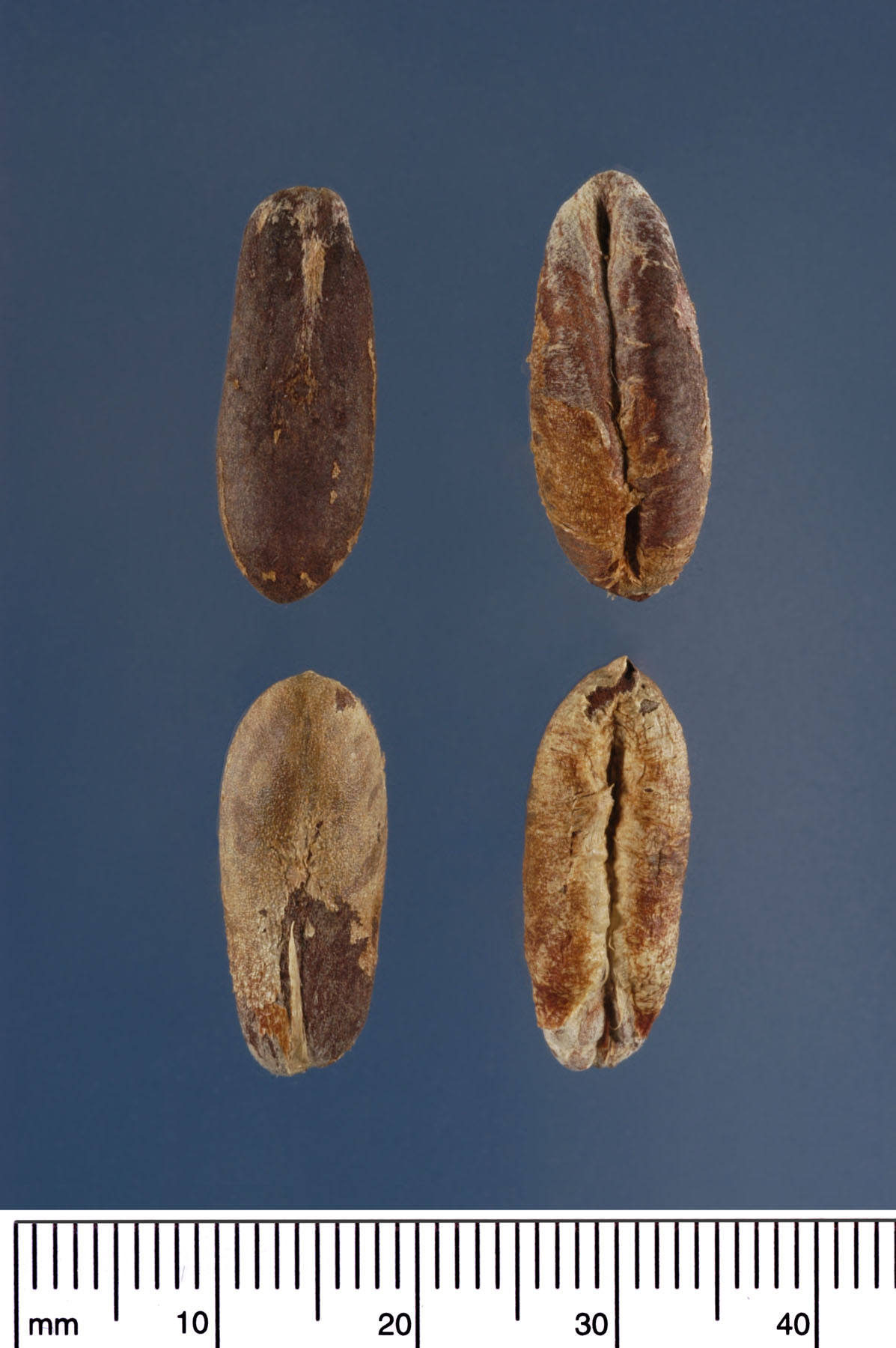Phoenix dactylifera
|
Phoenix dactylifera older individual with multiple stems |
|
Phoenix dactylifera field of young individuals in cultivation |
|
Phoenix dactylifera leaf bases and fibers |
|
Phoenix dactylifera leaf rachis and spines |
|
Phoenix dactylifera induplicate leaflet |
|
Phoenix dactylifera leaflet attachment |
|
Phoenix dactylifera closer view of leaflet and waxy bloom |
|
Phoenix dactylifera unripe fruit |
|
Phoenix dactylifera fruit. Photograph courtesy of Zachbe, Wikipedia, http://en.wikipedia.org/wiki/File:Freshdates.JPG |
|
Phoenix dactylifera seeds. Photograph courtesy of Mariana P. Beckman, DPI |
Common name
date palm, edible date
Description
Stems: Clustering with age (unless suckering shoots are pruned), erect to 25 m tall and 45 cm in diameter, bulging with above ground roots at the base; leafleaf:
in palms -- the leaf blade (which is usually divided into leaflets or leaf segments), the petiole (or leaf stalk) and the sheath (which forms the attachment of the leaf to the stem)
scars are spiraling, prominent raised knobs. In younger palms, the stem is covered with narrow, triangular leafleaf:
in palms -- the leaf blade (which is usually divided into leaflets or leaf segments), the petiole (or leaf stalk) and the sheath (which forms the attachment of the leaf to the stem)
bases of fallen or pruned leaves. Leaves: Pinnatepinnate:
like a feather; palms with pinnate leaves usually have compound leaflets attached to a rachis, although a pinnate leaf may be entire with pinnate veins (e.g., <em>Chamaedorea metallica</em>)
, induplicateinduplicate:
Most palm leaflets or leaf segments are obviously folded. If the folds create a V-shape, with the midrib lower than the margins (so that rain might fall "into a valley"), the folding is induplicate.
, to 6 m long, with a stiff rachisrachis:
an extension of the petiole through the blade of a pinnate leaf to which leaflets are attached
which ends in a single leaflet; many narrow, stiff, gray-green leaflets covered with a whitish bloombloom:
a white-gray waxy powder that covers a surface
, arranged in several planes; the lowermost leaflets (along the short petiole) are modified into sharp, thin spines; and no crown shaftcrown shaft:
a cylinder of clasping leaf sheaths toward the apex of the stem, found in some pinnate-leaved palms (e.g., <em>Wodyetia bifurcata</em>)
is formed from leafleaf:
in palms -- the leaf blade (which is usually divided into leaflets or leaf segments), the petiole (or leaf stalk) and the sheath (which forms the attachment of the leaf to the stem)
sheaths. Flowers and fruit: Inflorescences are orange-colored, 1-2 m long, and branched to one order. Creamy white staminatestaminate:
a flower bearing stamens but no pistils; a “male” flower
and pistillatepistillate:
a flower bearing a pistil but no stamens; a “female” flower
flowers are produced on different plants. Fruits are up to 3-4 cm long, ovoid and yellow, red or orange-red when ripe.
Diagnostic features
Field: In younger palms, the stem is covered with narrow, triangular leafleaf:
in palms -- the leaf blade (which is usually divided into leaflets or leaf segments), the petiole (or leaf stalk) and the sheath (which forms the attachment of the leaf to the stem)
bases of fallen or pruned leaves. With age, multiple stems are formed (unless suckering shoots are pruned); leafleaf:
in palms -- the leaf blade (which is usually divided into leaflets or leaf segments), the petiole (or leaf stalk) and the sheath (which forms the attachment of the leaf to the stem)
scars spiraling, prominent raised knobs. Pinnatepinnate:
like a feather; palms with pinnate leaves usually have compound leaflets attached to a rachis, although a pinnate leaf may be entire with pinnate veins (e.g., <em>Chamaedorea metallica</em>)
, induplicateinduplicate:
Most palm leaflets or leaf segments are obviously folded. If the folds create a V-shape, with the midrib lower than the margins (so that rain might fall "into a valley"), the folding is induplicate.
leaves with spines formed from basal leaflets. Leaflets inserted in several planes.
May be confused with
Other Phoenix species, but the stem and leaflet arrangement are distinctive.
Distribution
Native to dry areas of Northern Africa and the Middle East
Additional comments
Because Phoenix species can hybridize easily and produce fertile crosses, determining the species within this genus might not be possible. Phoenix dactylifera has recently been used an ornamental landscape palm, in addition to its importance as a fruit crop.
Scientific name
Phoenix dactylifera L.
Family
Arecaceae/Palmae
Synonyms
Palma dactylifera (L.) Mill.


